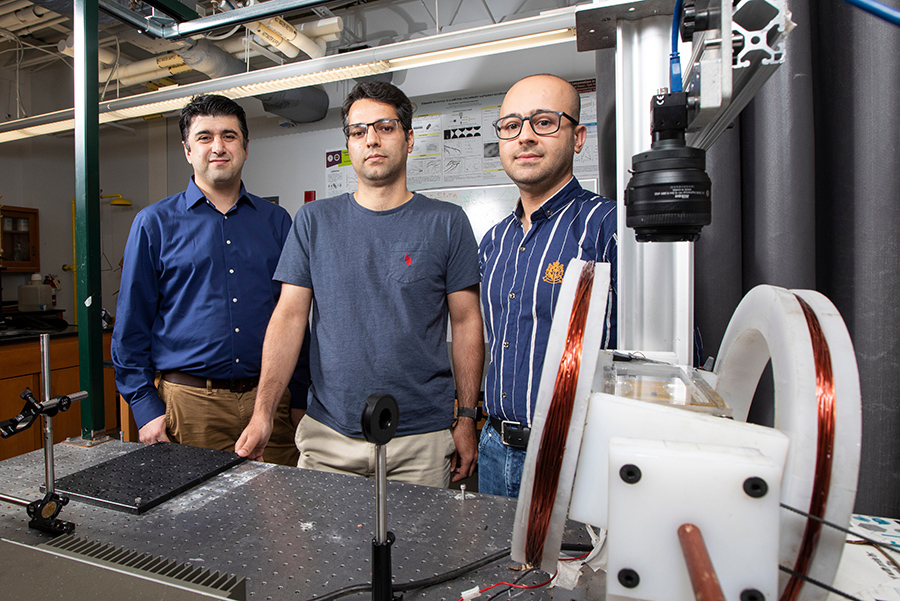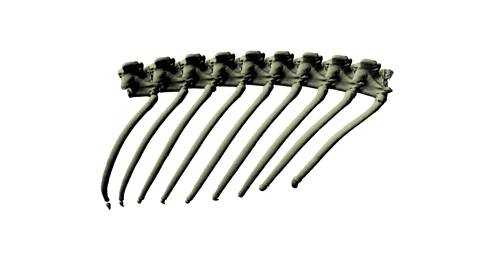Researchers used fossil evidence to engineer a soft robotic replica of an extinct marine organism to understand how locomotion has changed in animals over time.
Tag: Locomotion
Regular trainings are useful also for invertebrates
Scientists have proved that movement helps invertebrate animals successfully adapt to changes in the environment. Earlier favorable effect of locomotion on the work of nervous system was proved only for vertebrates.

Researchers use 3D models to investigate bacteria movement
In a new study published by Physical Review Letters, FAMU-FSU College of Engineering researchers created a 3D model of Helicobacter pylori to better understand its movement, hoping to crack the code governing the organism’s motility and develop alternative treatments for infections, such as strengthening the gastric mucus barrier that stands against the bacteria.
Scurrying Centipedes Inspire Many-Legged Robots That Can Traverse Difficult Landscapes
Intrigued to see if the many limbs could be helpful for locomotion in this world, a team of physicists, engineers, and mathematicians at the Georgia Institute of Technology are using this style of movement to their advantage. They developed a new theory of multilegged locomotion and created many-legged robotic models, discovering the robot with redundant legs could move across uneven surfaces without any additional sensing or control technology as the theory predicted.
Swimming secrets of prehistoric reptiles unlocked by new study
The diverse swimming techniques of the ancient reptiles that ruled the Mesozoic seas have been revealed for the first time by scientists at the University of Bristol.
The physics of walking is simpler than we thought
The physics of walking for multi-legged animals and robots is simpler than previously thought. That is the finding described by a team of roboticists, physicists and biologists in the Sept. 5 issue of the Proceedings of the National Academy of Sciences, in a paper titled “Walking is like slithering: a unifying, data-driven view of locomotion.”
Study First to Explore ‘Walking’ Sharks on the Move in Early Life Stages
A newly-discovered walking shark that breaks all of the rules for survival is the focus of a first-of-its-kind study that examined differences in walking and swimming in neonate (newly-hatched) and juvenile walking sharks. Despite dissimilarities in body shapes – neonates have bulging bellies and juveniles are slender – the three aquatic gaits they use (slow-to-medium walking, fast-walking and swimming) did not differ. Kinematics between neonate and juvenile epaulette sharks did not alter during development.
Tiny Limbs and Long Bodies: Coordinating Lizard Locomotion
Using biological experiments, robot models, and a geometric theory of locomotion, researchers at the Georgia Institute of Technology investigated how and why intermediate lizard species, with their elongated bodies and short limbs, might use their bodies to move. They uncovered the existence of a previously unknown spectrum of body movements in lizards, revealing a continuum of locomotion dynamics between lizardlike and snakelike movements.

Ribs evolved for movement first, then co-opted for breathing
A major transformation in vertebrate evolution took place when breathing shifted from being driven by head and throat muscles—like in fish and frogs—to the torso—like in reptiles and mammals. But what caused the shift? A new study posits that the intermediate step was locomotion—the mechanics follow the same pattern as inhalation and exhalation.
Spinal Cord Contributes to Post-injury Walking Recovery in Cats
Article title: Recovery of locomotion in cats after severe contusion of the low thoracic spinal cord Authors: Hugo Delivet-Mongrain, Melvin Dea, Jean-Pierre Gossard, Serge Rossignol From the authors: “The main findings of this study show that after a very large damage following…